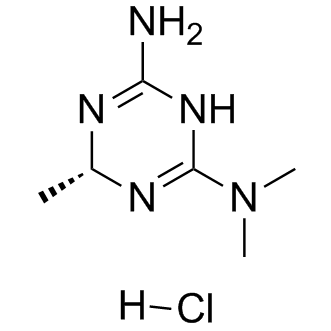Mitochondrial Metabolism
Mitochondria use multiple carbon fuels to produce ATP and metabolites, including pyruvate, which is generated from glycolysis; amino acids such as glutamine; and fatty acids. These carbon fuels feed into the TCA cycle in the mitochondrial matrix to generate the reducing equivalents NADH and FADH2, which deliver their electrons to the electron transport chain. Mitochondria are complex organelles that play an important role in many facets of cellular function, from metabolism to immune regulation and cell death. Mitochondria are actively involved in a wide variety of cellular processes and molecular interactions, such as calcium buffering, lipid flux, and intracellular signaling. It is increasingly recognized that mitochondrial dysfunction is a hallmark of many diseases such as obesity/diabetes, cancer, cardiovascular and neurodegenerative diseases. Mitochondrial metabolism is a key determinant of tumor progression by impacting on functions such as epithelial-to-mesenchymal transition. Mitochondrial metabolism and derived oncometabolites shape the epigenetic landscape to alter aggressiveness features of cancer cells. Changes in mitochondrial metabolism are relevant for the survival of tumors in response to therapy.
Targets for Mitochondrial Metabolism
Products for Mitochondrial Metabolism
- Cat.No. Nom du produit Informations
-
GC40801
(±)9(10)-DiHOME
(±)9(10)-DiHOME est le racémate de 9,10-DiHOME.

-
GC14049
(-)-Epigallocatechin gallate (EGCG)
Un phénol avec des activités biologiques diverses.
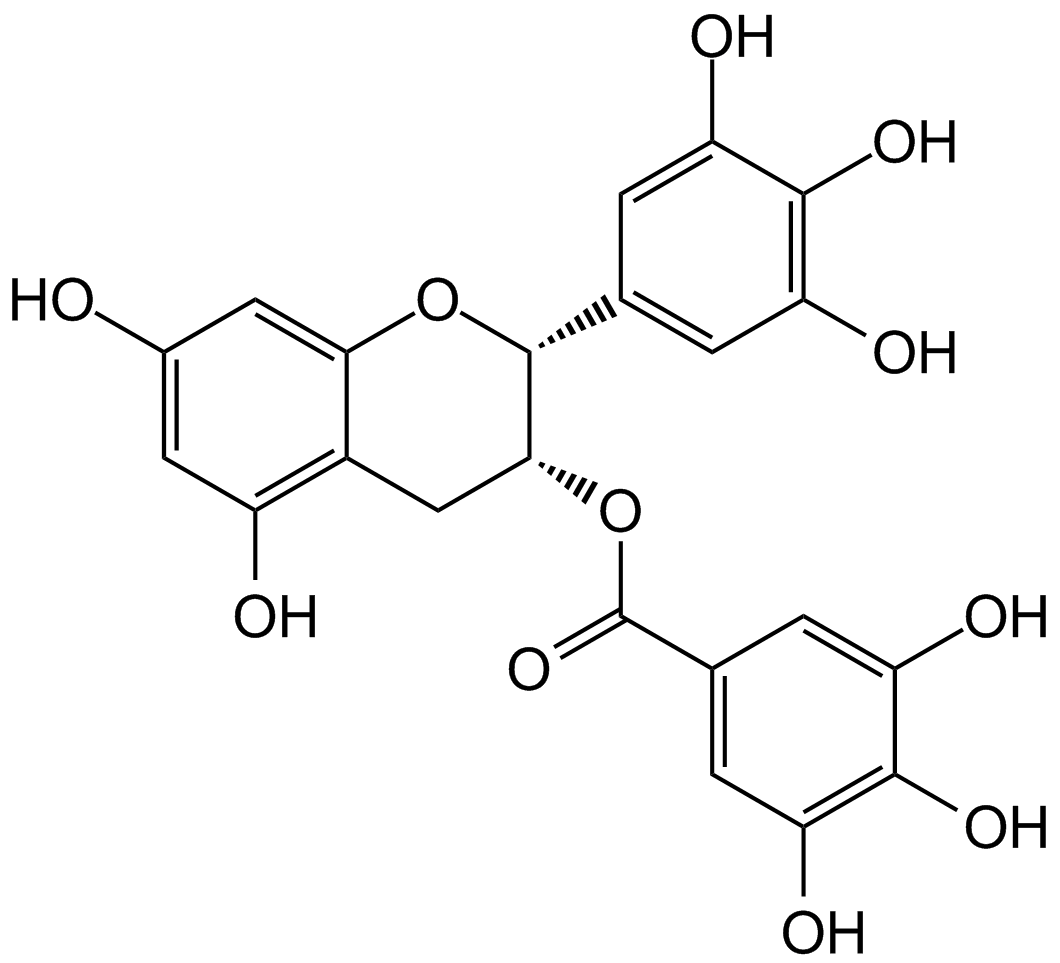
-
GC41721
(R)-α-Lipoic Acid
(R)-α-Lipoic acid is the naturally occurring enantiomer of lipoic acid, a cyclic disulfide antioxidant.

-
GC18596
(±)-2-propyl-4-Pentenoic Acid
L'acide (±)-2-propyl-4-penténoÏque (4-en-VPA) est un métabolite toxique majeur de l'acide valproÏque.

-
GC19528
1,4-Benzoquinone
A toxic metabolite of benzene
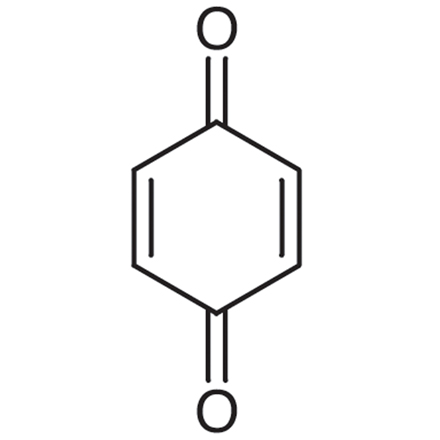
-
GC49872
10-Formyltetrahydrofolate (sodium salt) (technical grade)
Le 10-formyltétrahydrofolate (sel de sodium) (qualité technique) est une forme d'acide tétrahydrofolique qui agit comme donneur de groupes formyle dans l'anabolisme.

-
GC46451
16F16
A PDI inhibitor

-
GC42193
2-Thenoyltrifluoroacetone
La 2-thénoyltrifluoroacétone est un agent chélateur.

-
GC49849
3-Aminosalicylic Acid
A salicylic acid derivative

-
GC42351
4-carboxy TEMPO
4-carboxy TEMPO is a nitroxide and spin label.

-
GC49722
4-CF3-TPP-DC
An inert mitochondriotropic carrier

-
GC41310
5-Octyl-α-ketoglutarate
In addition to its role in the Krebs cycle, α-ketoglutarate (2-oxoglutarate) has roles as a substrate or modulator of enzymes.

-
GC46779
Acequinocyl
A naphthoquinone acaricide

-
GC42695
Acetoacetyl Coenzyme A (sodium salt hydrate)
Acetoacetyl coenzyme A (acetoacetyl-CoA) is a precursor to HMG-CoA in the isoprenoid pathway.

-
GC46789
Acetyl-L-carnitine-d3 (chloride)
An internal standard for the quantification of L-acetylcarnitine

-
GC19021
Adjudin
Adjudin est un contraceptif masculin largement étudié avec un effet supérieur d'inhibition des mitochondries. Adjudin est également un puissant bloqueur du canal Cl.
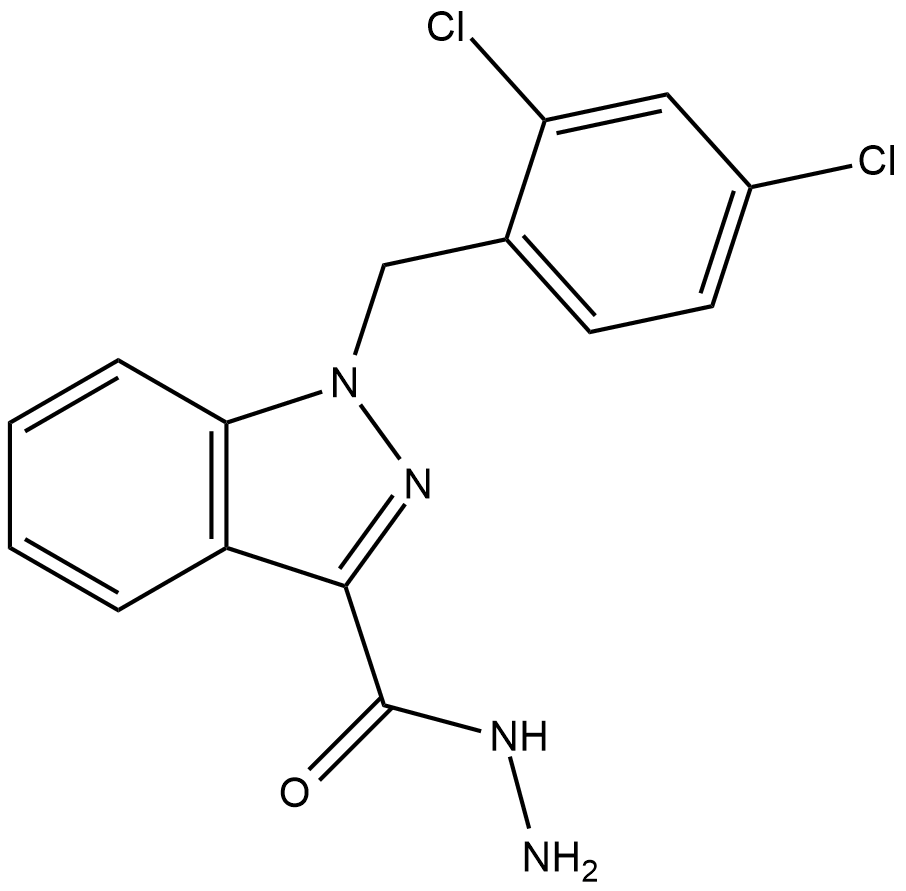
-
GC42742
ADT-OH
L'ADT-OH est un donneur libérant du sulfure d'hydrogène. L'ADT-OH induit l'apoptose et inhibe le développement du mélanome in vivo en régulant À la hausse le FADD. ADT-OH a le potentiel pour la recherche sur les maladies cancéreuses.

-
GC46812
Aflatoxin G1-13C17
An internal standard for the quantification of aflatoxin G1

-
GC35262
Afzelin
Afzelin (Kaempferol-3-O-rhamnoside) est un glycoside de flavonol trouvé dans Houttuynia cordata Thunberg et est largement utilisé dans la préparation d'agents antibactériens et antipyrétiques, de détoxifiants et pour le traitement de l'inflammation.
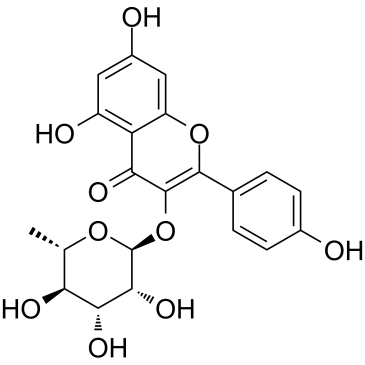
-
GC63642
Agaric acid
L'acide agarique (acide agaricinique) est obtenu À partir de diverses plantes de la tribu des champignons, c'est-À-dire.
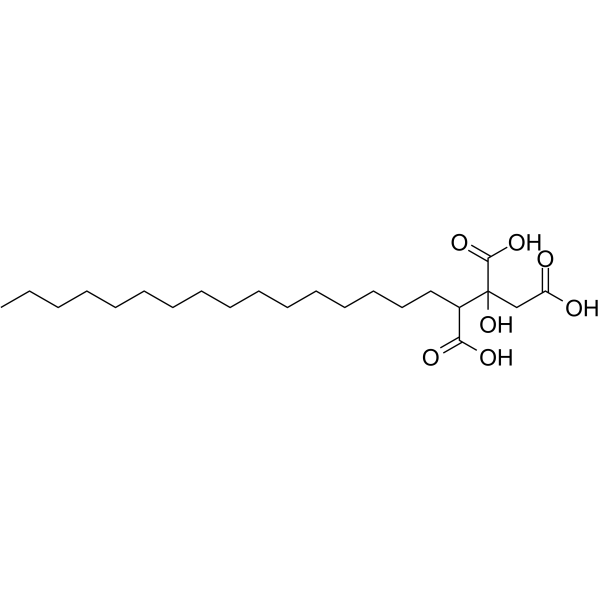
-
GC18437
Alternariol monomethyl ether
L'éther monométhylique d'alternariol, isolé des racines d'Anthocleista djalonensis (Loganiaceae), est un important marqueur taxonomique de l'espèce végétale.
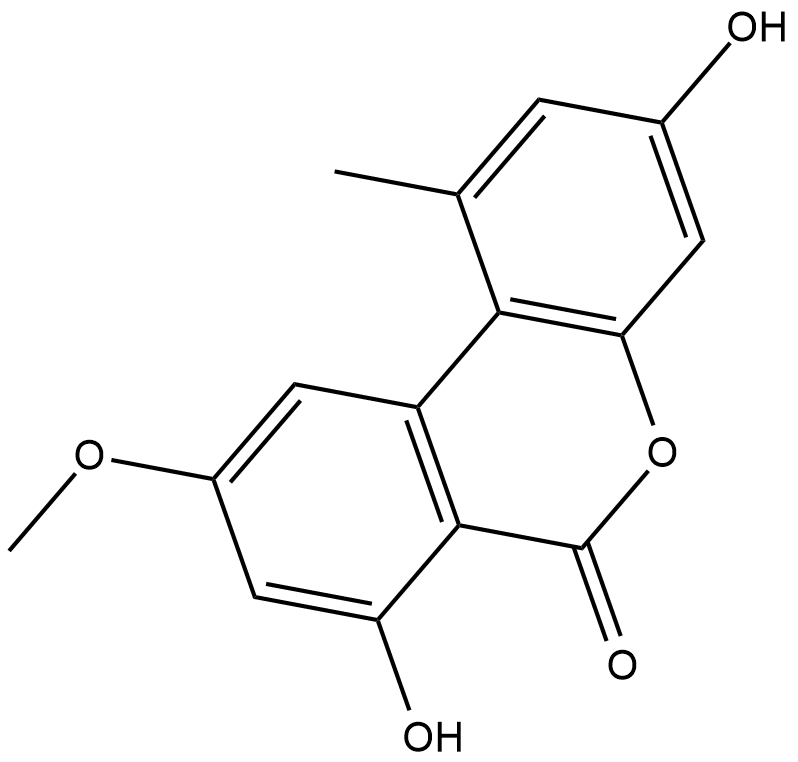
-
GC18274
Amiprofos-methyl
L'amiprofos-méthyl (BAY-NTN 6867) est un herbicide à base d'amide phosphorique.
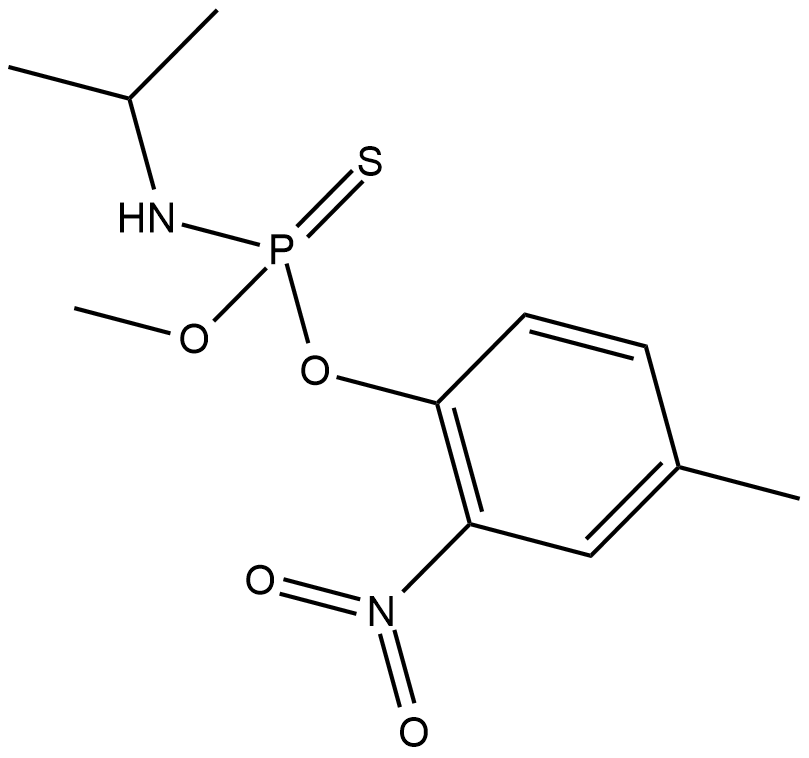
-
GC42818
Antimycin A1
L'antimycine A1 est un inhibiteur spécifique du transfert d'électrons de l'ubiquinol-cytochrome c oxydoréductase. L'antimycine A1 inhibe l'angiogenèse par diminution de la production de VEGF causée par l'inhibition de l'activation de HIF-1α.

-
GC18621
Antimycin A2
Antimycin A2 is an active component of the antimycin A antibiotic complex.
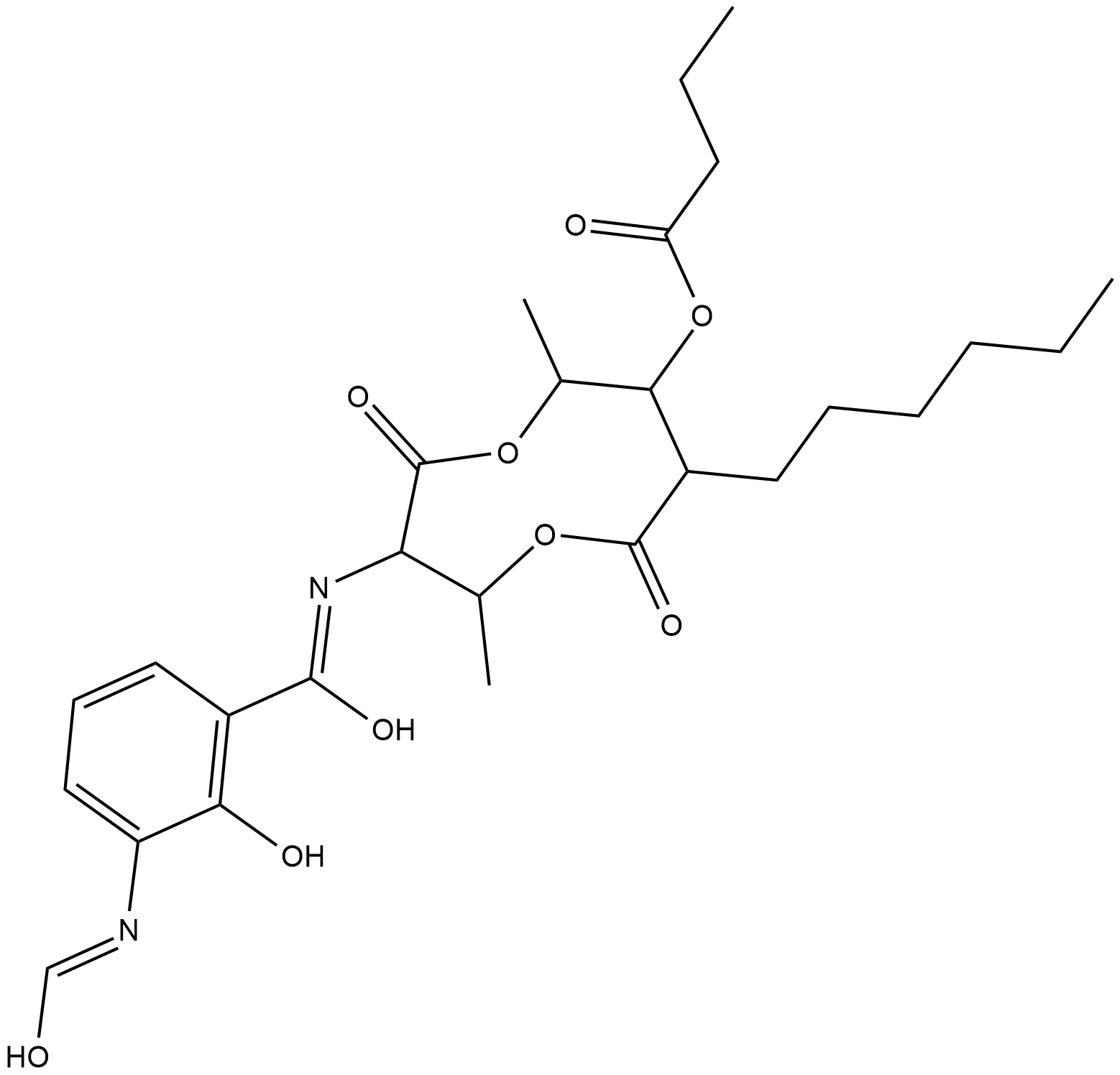
-
GC42820
Antimycin A4
Antimycin A4 is an active component of the antimycin A antibiotic complex that is more polar than antimycin A1, antimycin A2, and antimycin A3.

-
GC42821
AP219
AP39 is a compound used to increase the levels of hydrogen sulfide (H2S) within mitochondria.

-
GC42823
AP39
AP39 est un anéthole dithioléthione dérivé du triphénylphosphonium et un donneur de sulfure d'hydrogène (H2S) ciblant les mitochondries.

-
GC42846
Arachidonoyl-L-carnitine (chloride)
Carnitine facilitates the transport of fatty acids into the mitochondria to be used in fatty acid metabolism.

-
GC46883
AS-2077715
An inhibitor of fungal complex III

-
GC31432
Asp-AMS
Asp-AMS, un analogue de l'aspartyl-adényle, est un inhibiteur de l'aspartyl-ARNt synthétase et également un fort inhibiteur compétitif de l'enzyme mitochondriale.
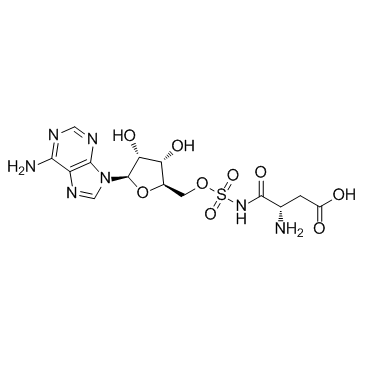
-
GC42874
Aureothin
Aureothin is a natural nitroaryl-substituted polyketide that exhibits antitumor, antifungal, and insecticidal activities.

-
GC40677
Avenaciolide
Avenaciolide est un bis-γ-lactone antifongique trouvé dans Aspergillus avenaceus.

-
GC18580
B355252
Le B355252, une petite molécule de phénoxy thiophène sulfonamide, est un puissant agoniste des récepteurs du NGF.
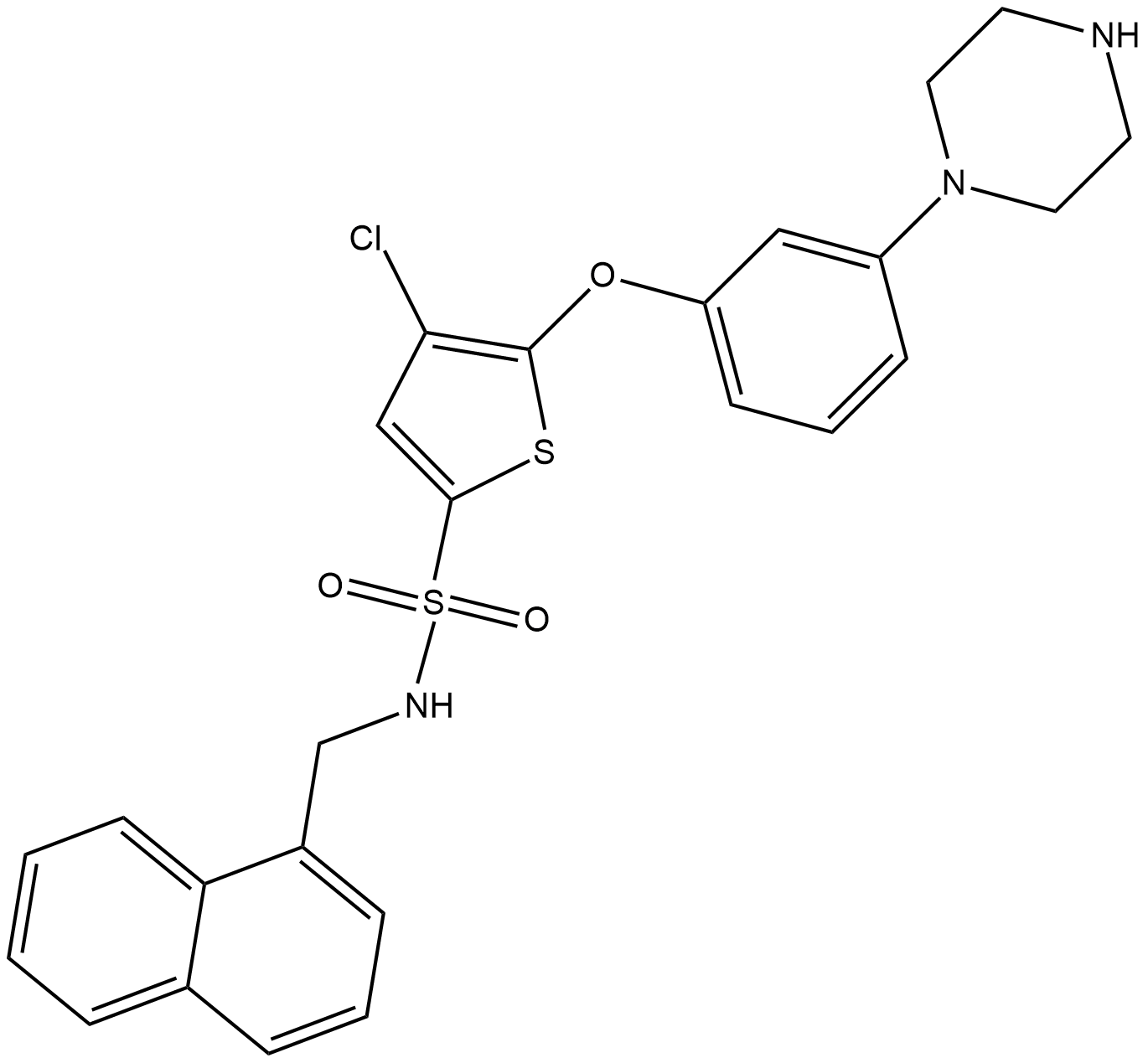
-
GC49901
BAY-179
BAY-179 est un inhibiteur puissant, sélectif et À réaction croisée du complexe I (IC50 = 79 μM).

-
GC49403
Benzarone
Benzarone (Fragivix) est un puissant inhibiteur du transporteur 1 de l'acide urique humain (hURAT1), avec une IC50 de 2,8 μM dans l'ovocyte.
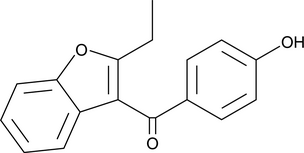
-
GC49318
Benzovindiflupyr
A fungicide

-
GC41252
BI-6C9
BI-6C9 est un inhibiteur hautement spécifique du domaine d'interaction BH3 (Bid), qui empêche le potentiel de membrane externe mitochondriale (MOMP) et la fission mitochondriale, et protège les cellules de la libération du facteur induisant l'apoptose mitochondriale (AIF) et de la mort cellulaire indépendante de la caspase dans les neurones. 1].

-
GC52355
BimS BH3 (51-76) (human) (trifluoroacetate salt)
A Bim-derived peptide

-
GC18408
BML-278
BML-278 is an activator of sirtuin 1 (SIRT1) that has an EC150 value (effective concentration able to increase the enzyme by 150%) of 1 uM.
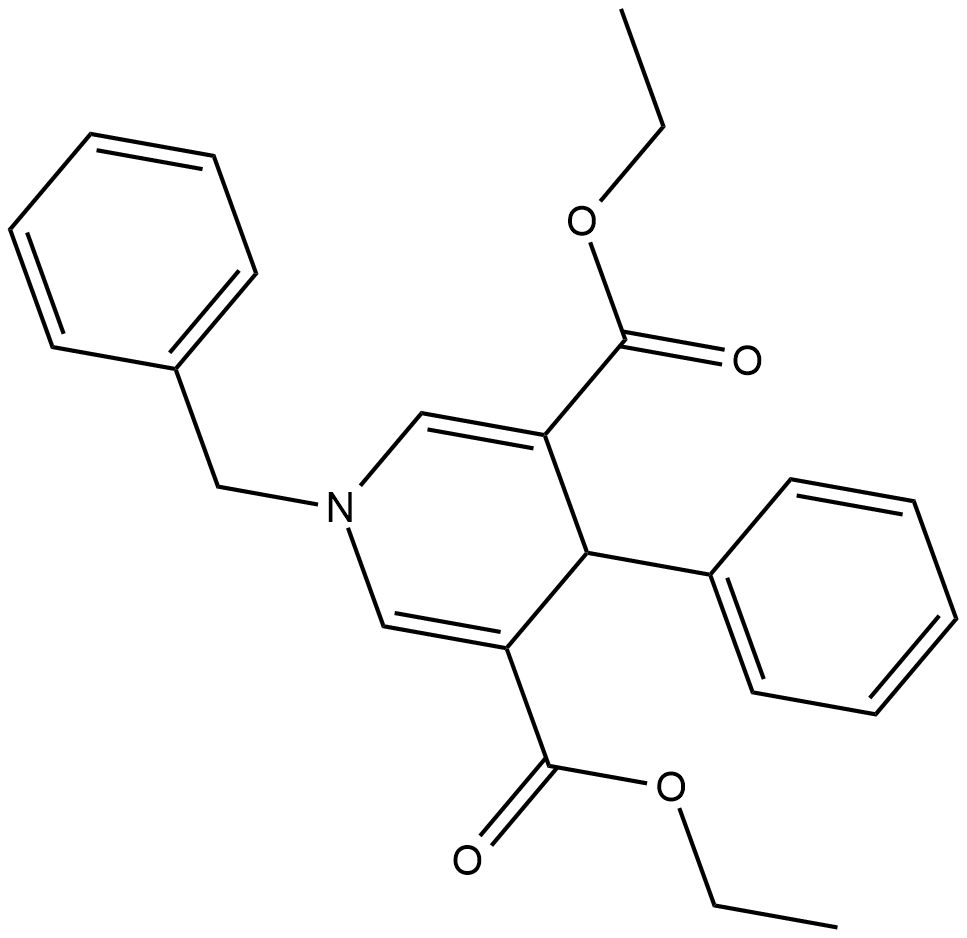
-
GC46943
Boscalid
A broad-spectrum carboxamide fungicide

-
GC42978
Bromamphenicol
Bromamphenicol is a dibrominated derivative of the antibiotic chloramphenicol.

-
GC43030
C16 dihydro Ceramide (d18:0/16:0)
A bioactive sphingolipid

-
GC48425
C18 D-threo Ceramide (d18:1/18:0)
A synthetic ceramide

-
GC49806
C18 Ganglioside GD3-d3 (ammonium salt)
An internal standard for the quantification of ganglioside GD3

-
GC43050
C18 L-erythro Ceramide (d18:1/18:0)
C18 L-erythro Ceramide is a naturally occurring ceramide and stereoisomer of C18 ceramide.

-
GC43051
C18 L-threo Ceramide (d18:1/18:0)
C18 L-threo Ceramide is a synthetic ceramide and stereoisomer of C18 ceramide that has been used for structural characterization of natural sphingolipids.

-
GC43052
C18 Phytoceramide (t18:0/18:0)
C18 Phytoceramide (t18:0/18:0) (Cer(t18:0/18:0)) is a bioactive sphingolipid found in S.

-
GC40141
C18 Phytoceramide-d3 (t18:0/18:0-d3)
C18 Phytoceramide-d3 (t18:0/18:0-d3) is intended for use as an internal standard for the quantification of C18 phytoceramide (t18:0/18:0) by GC- or LC-MS.

-
GC43069
C22 Ceramide (d18:1/22:0)
C-22 ceramide is an endogenous bioactive sphingolipid.

-
GC43141
Carboxyatractyloside (potassium salt)
Carboxyatractyloside is a natural heteroglucoside produced in some plants, including A.

-
GC43195
CAY10703
Dichloroacetate (DCA) is an inhibitor of all pyruvate dehydrogenase kinase (PDHK) isoforms, which are enzymes that phosphorylate and inhibit PDH in mitochondria.

-
GC47065
CAY10773
A derivative of sorafenib

-
GC14727
CCCP
Carbonylcyanide-3-chlorophénylhydrazone (CCCP) est un protonophore qui provoque le découplage du gradient de protons dans la membrane mitochondriale interne, inhibant ainsi la vitesse de synthèse de l'ATP.
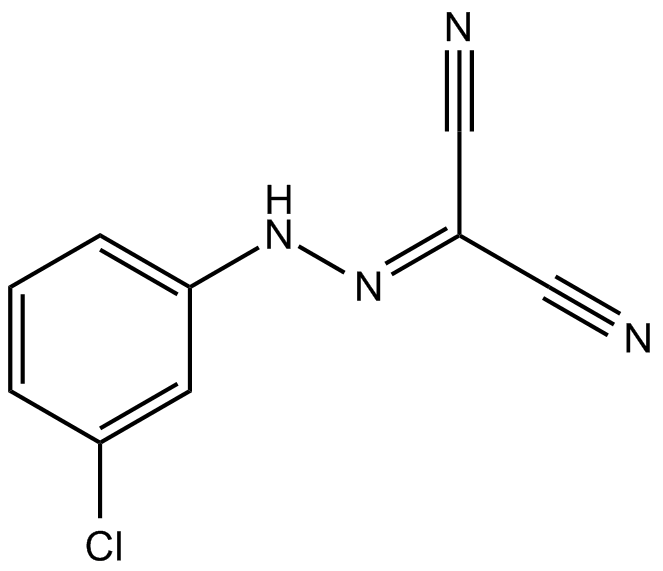
-
GC65208
CCI-006
CCI-006 est un inhibiteur sélectif et un chimiosensibilisateur des cellules leucémiques réarrangées MLL, en inhibant la respiration mitochondriale entraÎnant une dépolarisation mitochondriale insurmontable et une réponse protéique dépliée pro-apoptotique (UPR) dans un sous-ensemble de cellules leucémiques MLL-r.
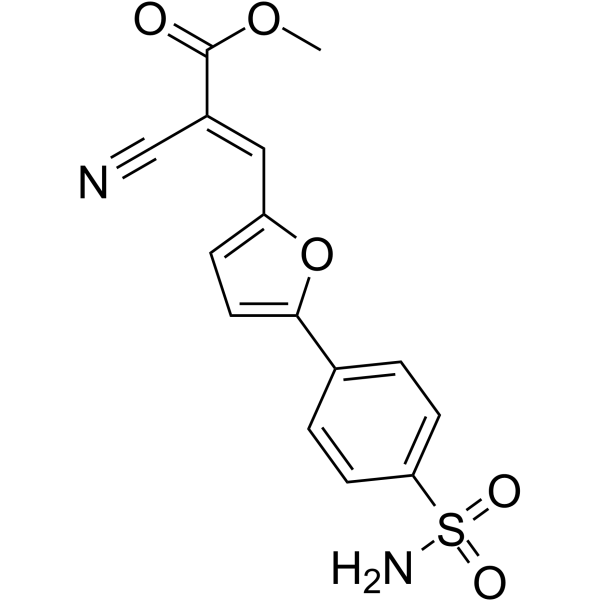
-
GC43289
Cochlioquinone B
Cochlioquinone is a sesquiterpene metabolite originally isolated from C.

-
GC47114
Coenzyme A (lithium salt hydrate)
An essential cofactor in enzymatic acetyl transfer reactions

-
GC43295
Coenzyme A (sodium salt hydrate)
Coenzyme A (CoA) is an essential cofactor functioning as an acyl group carrier and carbonyl-activating group for the citric acid cycle and fatty acid metabolism.

-
GC47116
Coenzyme Q10-d6
Un standard interne pour la quantification de CoQ10.

-
GC43297
Coenzyme Q2
Coenzyme Q10 is a component of the electron transport chain and participates in aerobic cellular respiration, generating energy in the form of ATP.

-
GC49454
Complex 3
A fluorescent copper complex with anticancer activity

-
GC47123
Coumarin-Quinone Conjugate
A fluorescent substrate for NADH:ubiquinone oxidoreductases

-
GC19138
CTPI-2
CTPI-2 est un inhibiteur SLC25A1 porteur de citrate mitochondrial de troisième génération avec un KD de 3,5 μM.
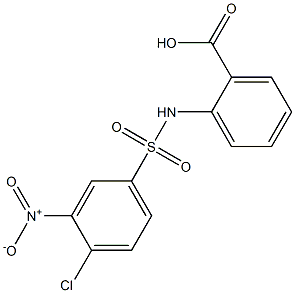
-
GC43345
Cyclohexanoyl Coenzyme A
Cyclohexanoyl coenzyme A (CHCoA) is an acyl CoA that contains a cyclohexane group.

-
GC49863
Cytarabine 5′-monophosphate
An active metabolite of cytarabine

-
GC25337
D-Carnitine hydrochloride
D-Carnitine hydrochloride ((S)-Carnitine hydrochloride, (+)-Carnitine hydrochloride) is biosynthesized from lysine. It might be associated with the energy production from branched chain amino acids.
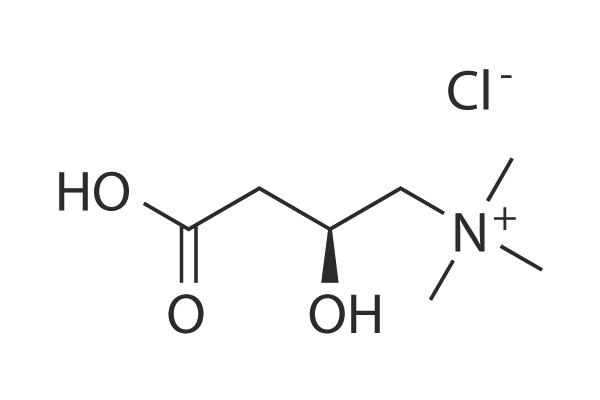
-
GN10072
Daidzin
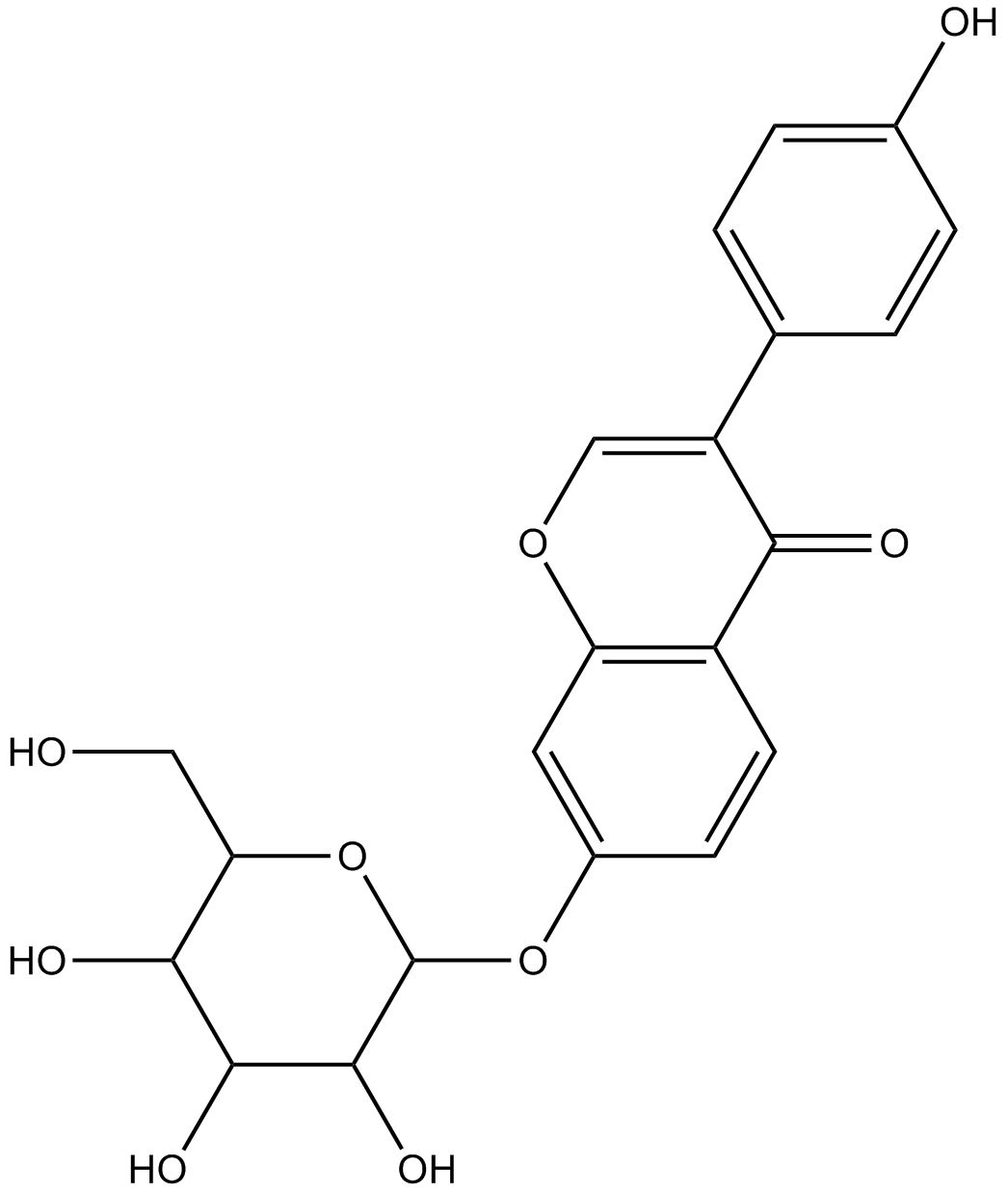
-
GC40538
Decylubiquinone
La décylubiquinone est un analogue de l'ubiquinone (coenzyme Q10).

-
GC18869
Deoxyenterocin
Deoxyenterocin is a bacterial metabolite originally isolated from Streptomyces that has diverse biological activities, including antibiotic, antiviral, and antioxidant properties.
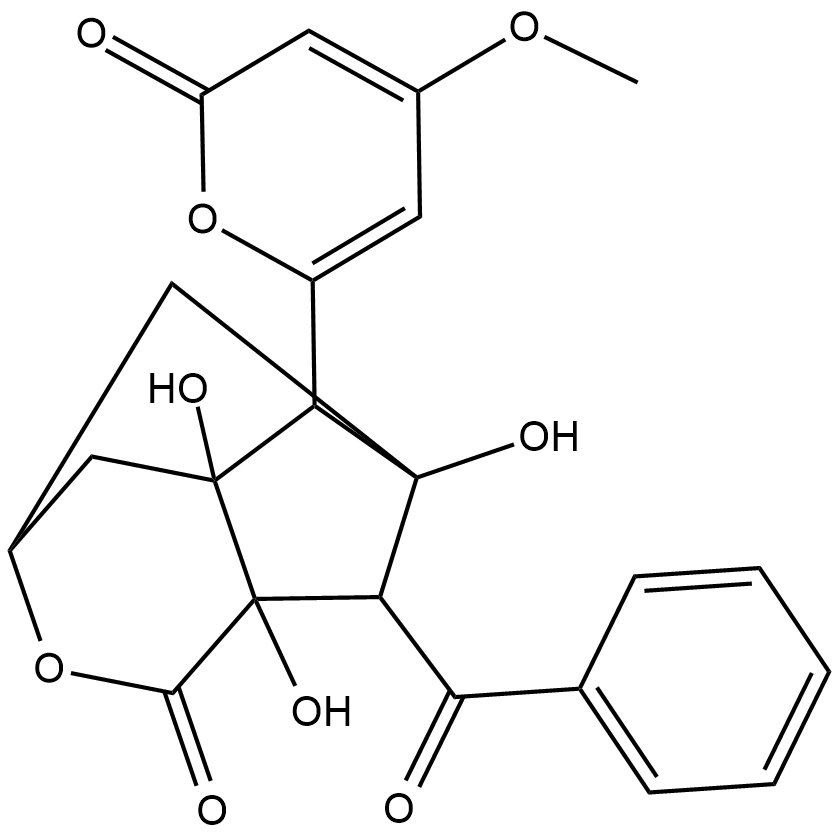
-
GC49022
Didanosine-d2
An internal standard for the quantification of didanosine

-
GC38620
Dihydrorotenone
La dihydroroténone, un pesticide naturel, est un inhibiteur mitochondrial puissant.
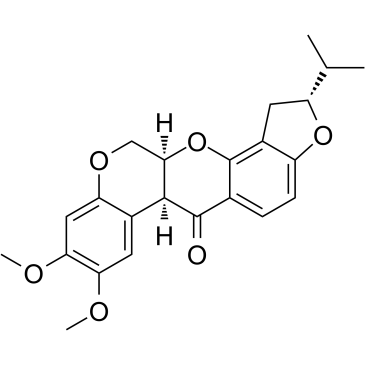
-
GC43463
DiIC1(5)
DiIC1(5) is a signal-off fluorescent probe for the detection of mitochondrial membrane potential disruption.

-
GC47238
Diquat (bromide)
Le diquat (bromure) est un herbicide complet couramment utilisé dans la culture du coton, du soja et d'autres cultures pour lutter contre les mauvaises herbes indésirables.

-
GC43498
DL-α-Lipoic Acid
DL-α-L'acide lipoÏque est un antioxydant, qui est un cofacteur essentiel des complexes enzymatiques mitochondriaux.

-
GC47243
DL-Carnitine-d9 (chloride)
An internal standard for the quantification of carnitine

-
GC43543
DNP-INT
DNP-INT is a quinone analog that inhibits electron transport in plants by competitively inhibiting plastoquinol oxidation by binding at the Qo site of cytochrome b6f (Kd = 1.4 nM).

-
GC18439
Doxorubicinone
La doxorubicinone est un métabolite d'un agent de chimiothérapie anticancéreux, la doxorubicine. La doxorubicine est un puissant inhibiteur de l'ADN humain de la topoisomérase I et de la topoisomérase II avec des IC50 de 0,8μM et 2,67μM, respectivement.
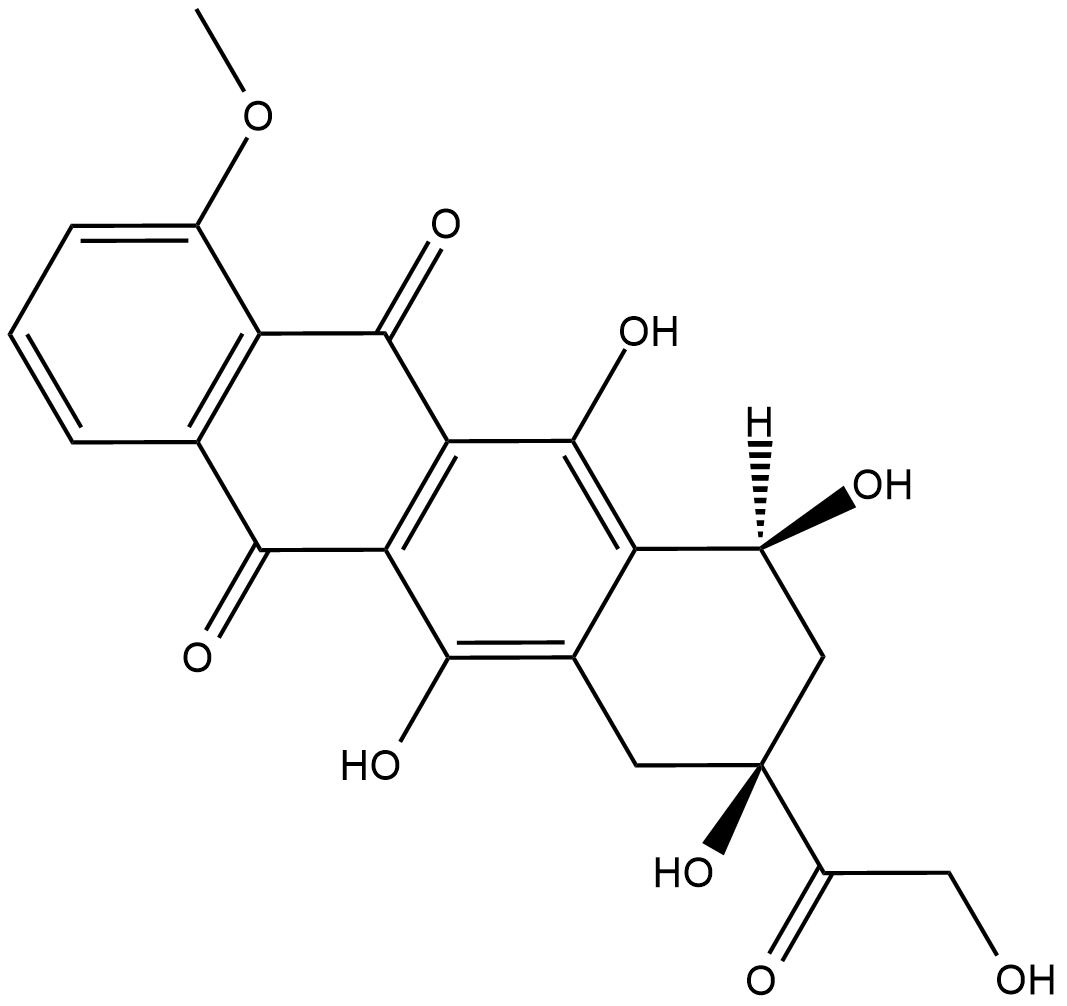
-
GC47274
DS44960156
DS44960156 est un inhibiteur sélectif de la méthylènetétrahydrofolate déshydrogénase 2 (MTHFD2), avec des valeurs IC50 de 1,6 μM et> 30 μM pour MTHFD2 et MTHFD1, respectivement .

-
GC18992
Duclauxin
Duclauxin decreases proliferation of tumor cells in vitro and increases the lifespan of mice innoculated with Ehrlich ascitic tumor cells.
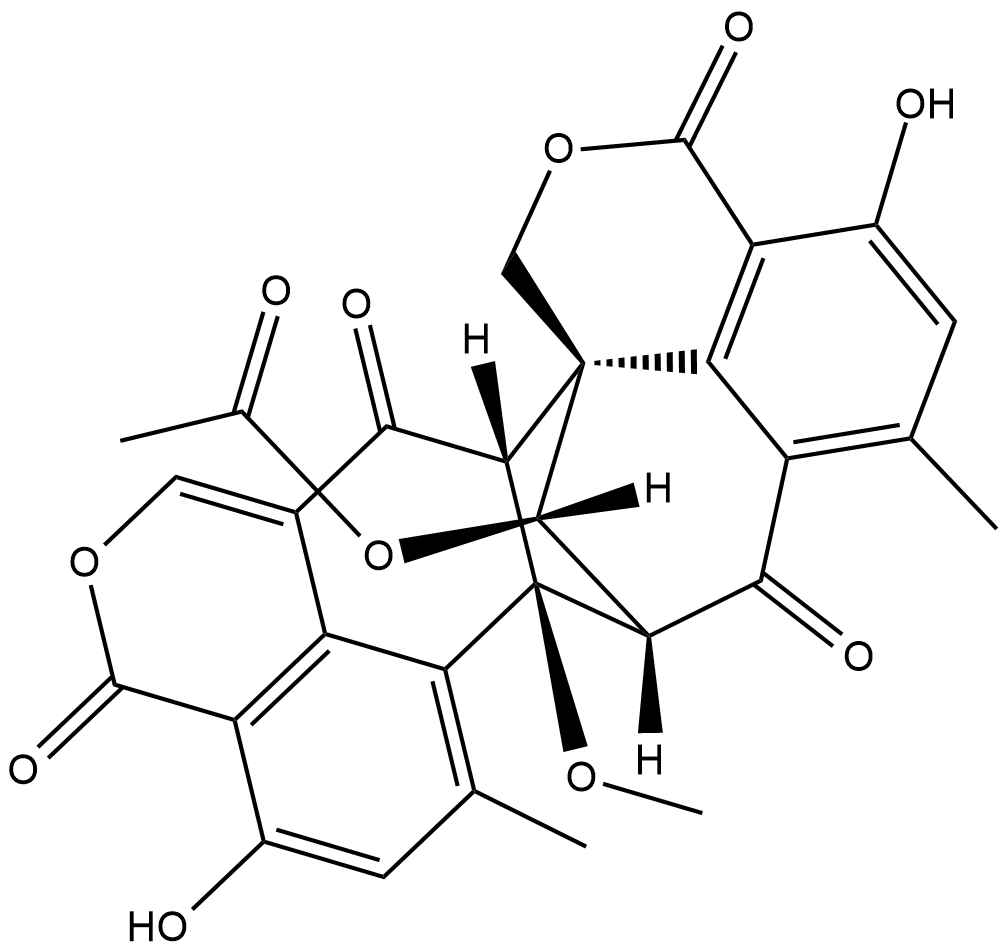
-
GC34569
Elamipretide TFA
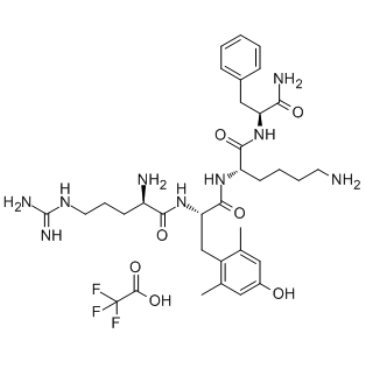
-
GC32858
ER-000444793
ER-000444793 est un puissant inhibiteur de l'ouverture des pores de transition de perméabilité mitochondriale (mPTP). ER-000444793 inhibe mPTP avec une IC50 de 2,8μM.
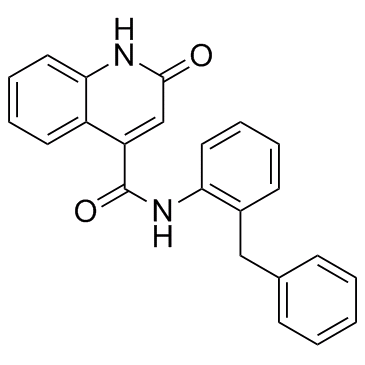
-
GC14328
FCCP
FCCP, un transporteur de protons (ionophore H+), est également un puissant agent de couplage de diffusion d'acide phosphorique, qui favorise la dépolarisation de la membrane plasmique et mitochondriale.
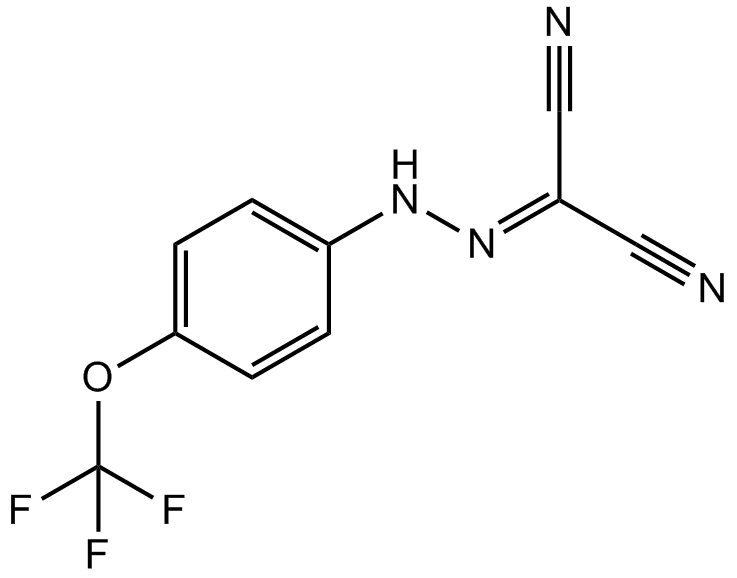
-
GC18641
Ferutinin
La ferutinine, un composé terpénoÏde naturel, est un agoniste des récepteurs ERα des œstrogènes et un agoniste/antagoniste des récepteurs ERβ des œstrogènes avec des CI50 de 33,1 nM et 180,5 nM, respectivement.
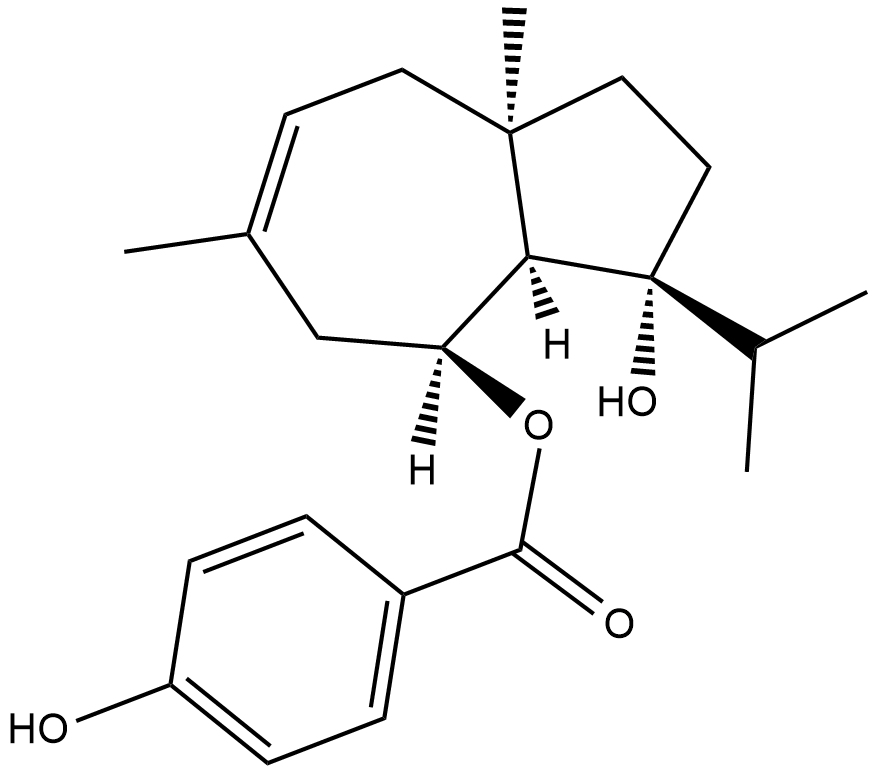
-
GC43664
Filipin II
Filipin II is a polyene and an active component of the polyene antibiotic filipin complex.

-
GC43713
Fura-FF (potassium salt)
Fura-FF (sel de potassium) est un colorant fluorescent de faible affinité pour le calcium (Ex/Em : 365/514 nm en l'absence de calcium ; 339/507 nm en présence d'une concentration élevée en calcium).

-
GC43714
Fura-FF AM
Fura-FF AM is a cell-permeable acetoxymethyl ester of the fluorescence calcium indicator fura-FF (potassium salt).

-
GC40008
Fuscin
Fuscine, un métabolite fongique, antagoniste du récepteur CCR5 avec des effets anti-VIH.

-
GC43723
Galactosylsphingosine (d18:1)
Galactosylsphingosine (d18:1) (Galactosylsphingosine), un substrat de l'enzyme galactocérébrosidase (GALC), est un biomarqueur potentiel de la maladie de Krabbe.

-
GC43729
Ganglioside GD3 Mixture (sodium salt)
Ganglioside GD3 is synthesized by the addition of two sialic acid residues to lactosylceramide and can serve as a precursor to the formation of more complex gangliosides by the action of glycosyl- and sialyltransferases.

-
GC36132
Genistein 8-c-glucoside
La génistéine 8-c-glucoside (G8CG) est un glucoside. La génistéine 8-c-glucoside induit une dépolarisation de la membrane mitochondriale et induit l'apoptose.
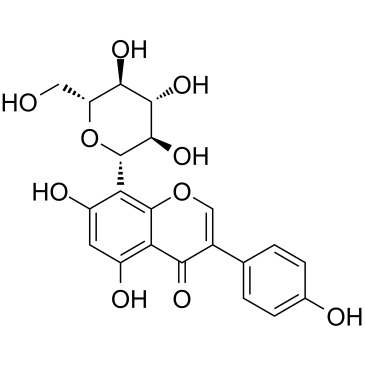
-
GC47399
Geranylgeranoic Acid
An isoprenoid with anticancer activity

-
GC61599
GW604714X
GW604714X est un puissant inhibiteur de la respiration mitochondriale soutenu par le pyruvate mais pas par d'autres substrats.
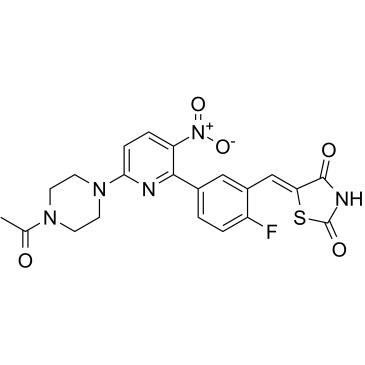
-
GA10948
H-His-OH
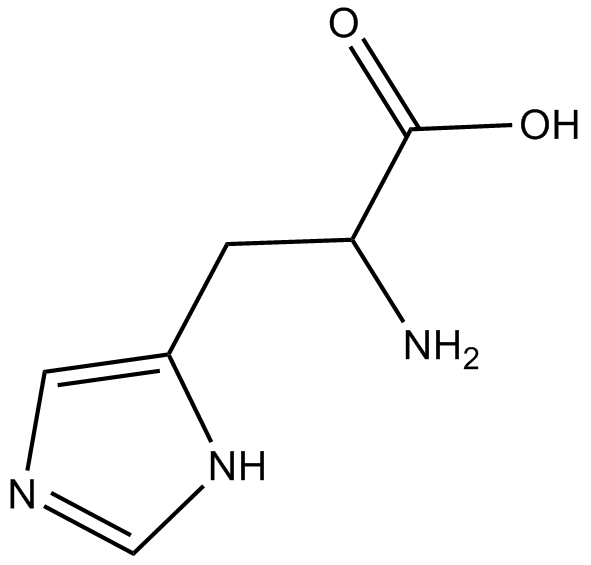
-
GC40665
Harzianopyridone
Harzianopyridone is an atpenin-like inhibitor of mammalian and nematode mitochondrial complex II (succinate:ubiquinone oxidoreductase; SQR) with IC50 values of 0.017, 0.2, and 2 μM for bovine, rat, and nematode complex II, respectively.

-
GC52219
Heptadecanoyl-L-carnitine (chloride)
A long-chain acylcarnitine

-
GC52231
Heptadecanoyl-L-carnitine-d3 (chloride)
An internal standard for the quantification of heptadecanoyl-L-carnitine

-
GC49479
Hypoxanthine-d4
An internal standard for the quantification of hypoxanthine

-
GC43887
IBTP (iodide)
IBTP is a lipophilic cation that is accumulated in mitochondria and forms stable thioether adducts in a thiol-specific manner.

-
GC49359
IM-156 (acetate)
A mitochondrial complex I inhibitor and an AMPKα activator

-
GC10576
Imeglimin
L'Imeglimine (EMD 387008) est un hypoglycémiant oral.
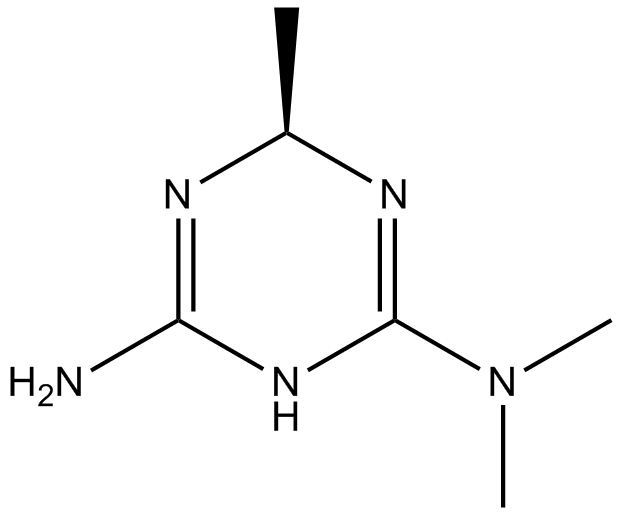
-
GC10956
Imeglimin hydrochloride
Le chlorhydrate d'Imeglimine (EMD 387008) est un hypoglycémiant oral.
